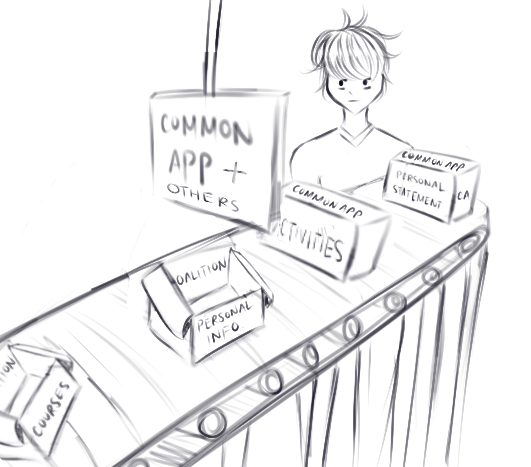Typing the last sentence of my ninth Common App personal statement draft, I heaved a sigh of relief as I pasted the polished essay into the text box: 649 words. Success.
But as I embarked on the menial task of entering all my data into the application portal, all of that excitement went to nil. I started to get floaters in my vision; my mind went numb as I entered my name, address, contact info, demographics, language, nationality, coursework, dual enrollment, honors/awards, all my test scores with their month and year and 150-character summaries of my extracurricular activities.
Thankfully, I thought, I only have to do this just once for the 10-15 schools I’m applying to. But no, I was wrong: Two of the colleges on my list remain holdovers on the Coalition App.
Crestfallen, I relived this nightmare, entering the same data into the Coalition application. Most of the fields — short answers around 10 characters long or multiple-choice selections — were so annoyingly short that the chore of retyping them was faster than copy-pasting. To make matters worse, my 150-character activities descriptions from the Common App needed rewriting to fit the new 255 character limit.
But apart from my own personal issues with the Coalition App, there is objectively no reason to have another application platform. Supporting only a sixth of the number of colleges on the Common App, Coalition provides minimal utility to typical student applicants, with nearly identical data entry requirements and personal essay prompts. Indeed, much of Coalition App’s relative lack of participation is due to its requirements on universities’ financial aid programs for underrepresented or low-income students. But given that such programs are becoming increasingly available, promoting equality should be in colleges’ hands, not in those of a web portal.
Save my vision and sanity, Coalition schools. Move to the Common App.


























